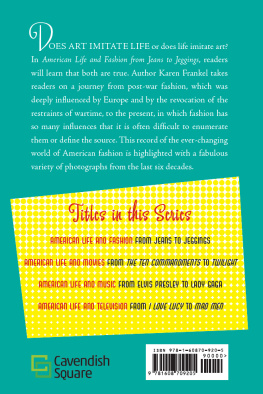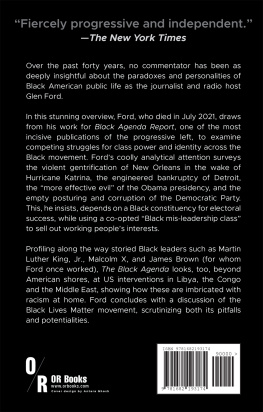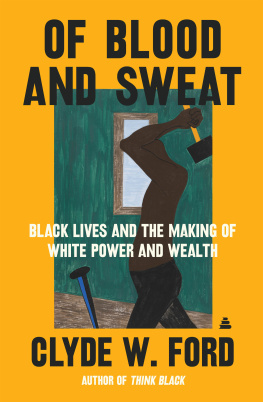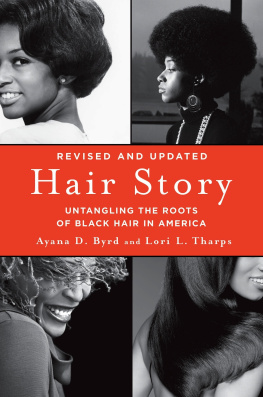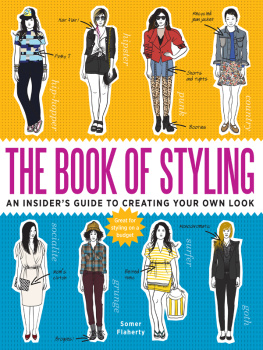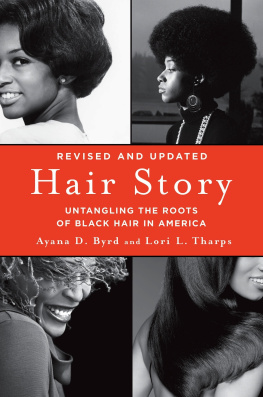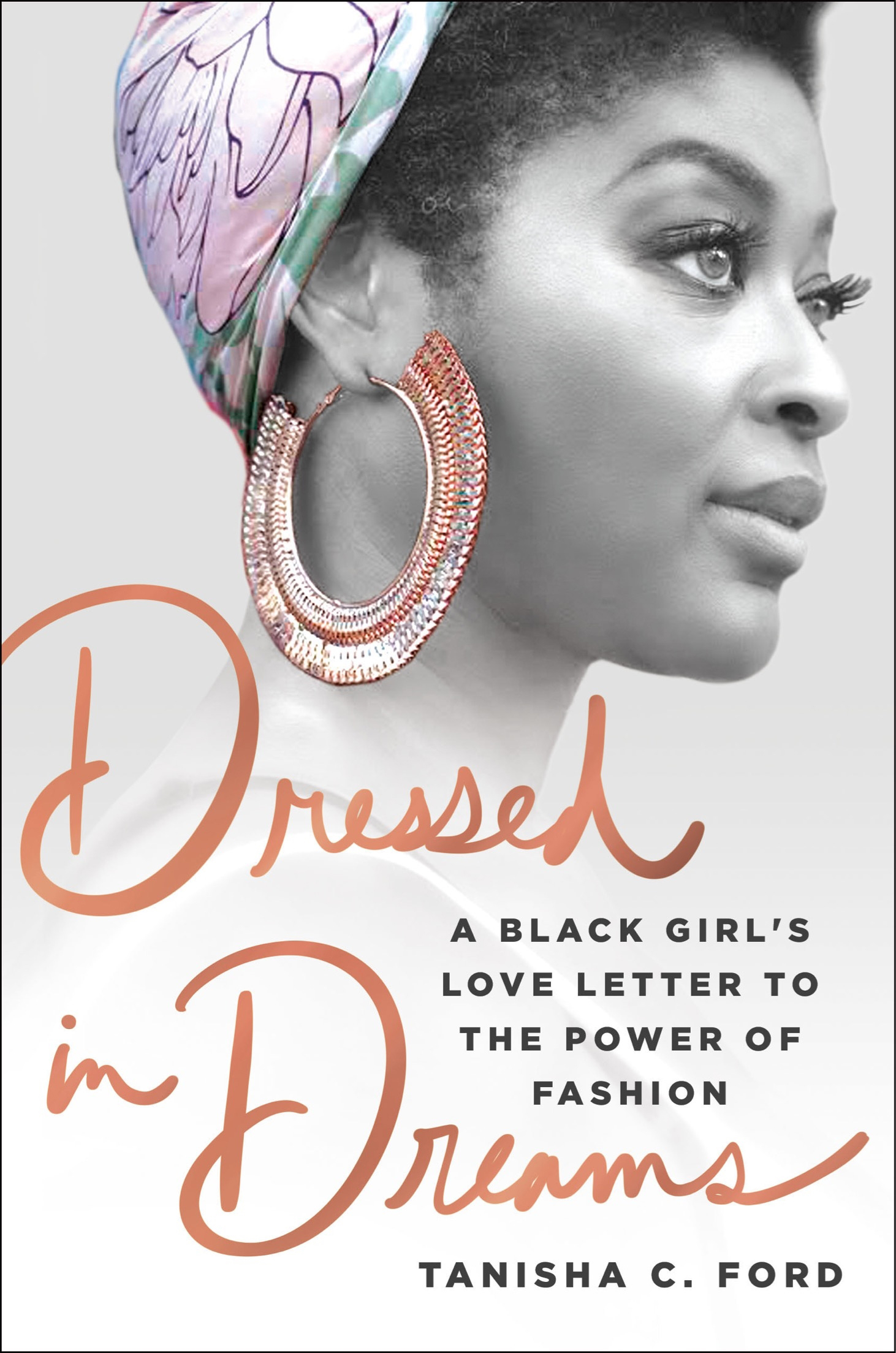The author and publisher have provided this e-book to you for your personal use only. You may not make this e-book publicly available in any way. Copyright infringement is against the law. If you believe the copy of this e-book you are reading infringes on the authors copyright, please notify the publisher at: us.macmillanusa.com/piracy.

We were a dashiki family in a Dickies town. And in a small Rust Belt city like Fort Wayne, Indiana, where conformity is essential for survival, this mattered. My parents were an oddball coupleone part black militant, one part bohemian dreamerwho lived full tilt in the 1970s, and forgot to hang up their dashikis at the end of the decade. Well, to be completely honest, Ive never actually seen either of them don a dashiki. But I have lived with their dashiki storieshuge, mythical storiesmy entire life. And Ive concluded: clothes are never just garments.
Each time we stand before our closet to pick out our clothes, we make a series of choices about how we want to appear before the world. This is just as true for people who claim not to care about clothes as it is for self-proclaimed fashionistas. Its because we recognize that the way we adorn ourselves communicates something about who we are and where we come from. And everyone has experienced the discomfort of showing up somewhere dressed like they didnt get the memo. We can think of our clothes, then, as a powerful social skin.
We assume that we know what signals or markers clothes tell us about who wears them: their race, gender, sexuality, political leanings, socioeconomic status, religion, and so forth. Were not always right, but the mere fact that we think we know means that we believe that clothes reflect an established cultural value system.
So when we pick out our power suit because we need to feel confident in a new environment or our Assata Taught Me t-shirt because we want folks to know whose we are as soon as we walk into the room, were aware of the social politics of dress and are finding ways to survive and thrive within social norms, or perhaps even to transgress them.
But even though the political stakes is high where clothes are concerned, there is room for play. Fashion allows us to turn the street into one big drag show. Through our clothes we can do our own form of world-making, imagining possibilities beyond what our current status says is our reality. And nobody does this better than people from oppressed groups, because we know what its like to be denied access or told something isnt for us simply because of the color of our skin or who we choose to love or because we pay with food stamps.
Ive devoted my entire career to unraveling the mysteries of why we make the choices we make around what we wear on our bodies and how we style our hair. It began as a way to think through how black women incorporated fashion into their activist strategies in the civil rights and Black Power movement years. Along the way, I noticed that whenever I gave talks about that moment in history, there were people of all ages who wanted to share their dressed body stories. Folks were finding joy in telling their stories and freedom in sharing their traumas in a safe space. So that got me to thinking that there was a piece of this thing that I was missing. I realized: theres power in getting dressed that goes beyond big P politics. Theres little p politicsthe everyday pleasures and delights of styling out, the strategies we use to navigate microaggressions, how we create communities around hair and dress, the ways we call out appropriation. Our garments are archives of memoriesindividual and collective, material and emotionalthat tell these rich, textured stories of our lives. To make it plain: our clothes make us feel things. All the things.
I wanted to write a book that acknowledges those everyday struggles and celebrates black innovation in fashion. We are the most creative folks, knowing how to do the most with the very least, in all the best ways. I wanted to pay homage to every Big Mama and Madear who made sure that even if their kids had nothing but hand-me-downs, they would be clean. I wanted to shout out the kids who had to go to school in said ill-fitting hand-me-down jeans and turned that look into the vibrant baggy jeans trend of the 1990s. I wanted to embrace the girls who survived on a steady diet of Vibe and Honey magazines and got called ghetto for rocking two pairs of huge doorknocker earrings, turquoise Wet n Wild lipstick, and dookie braids, only to see white girls be praised as fashion-forward when they did it. I wanted to big-up everyone who rocked a knockoff when they couldnt afford the real designer version. I wanted to give queer and trans folk in the ballroom scene their props for innovating much of what we call hip hop fashion and beauty culture, without ever getting the credit they deserved. Theres a whole black fashion ecosystem that exists because of and in spite of the mainstream fashion industry, which steals as many dreams as it inspires.
I found that while I was telling everyone elses story, I had my own story to tell about coming of age in a quirky political family in a Midwestern city that most people have never even heard of. Coming face-to-face with my own stories of getting dressed has not only turned me from researcher to subject, its made me see that black girls in the Midwest have a fashion story to tell too.
And all of my style choices and life trials and (mis)adventures can be traced back to the dashikis that I can imagine hanging in my parents closet. My parents. The ones who taught me how to dress and dreamand how to navigate the politics therein. I am a descendant of their fly style and also of the generational traumas that have fractured our family. I have taken my parents style, flipped it, remixed it, innovating with my own looks, traditions, and dress practices as a way to keep a grasp on my humanity. It definitely hasnt been easy being a dashiki daughter. As the heir apparent to my parents weirdness, I have learned firsthand about the emotional and social torment that came with daring to express myself differently. But my parents dashiki dreams would also lead me on a wondrous odyssey, far from Fort Waynes rusty sartorial trappings to some of the most glamorous, fashion-forward cities in the world. By telling my fashion story, Im telling the story of a community and a strategy for living, vital to our survival, shared across generations.
My dad, Herman Ford, was born into a family of Alabama sharecroppers who had fled the fields of the Jim Crow South for more lucrative livelihoods in the industrial Midwest. They were a part of the Second Great Migration, which brought a massive wave of more than 5 million African Americans from rural and urban areas of the South to settle in northern and western cities across the country after World War II. My grandmother, Ora Dee, followed her brother Ollis up to Fort Wayne in 1953. Fort Waynean old Revolutionary War military fort turned manufacturing epicenter that sits at the nexus of three riverswas the second largest city in the state. No one has ever called it a black cultural mecca, but it did have a lot of jobs to offer with the Pennsylvania Railroad, General Electric, Rea Magnet Wire, Phelps Dodge, and International Harvester. My father, who made his way into the world in summer 1953, was the first of the Ford children to be born in Fort Wayne, something that made him special among his siblings. Herman was the freedom baby. He had soaked up his mothers hopes of a better life up North in the womb and come out built of potential, destined to change the familys future.


